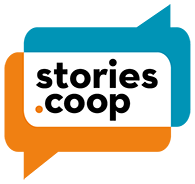The indigenous Kichwa live deep in Ecuadors Amazonian rainforest, a region whose particular climate and geology conditions are ideal for growing cacao, especially the rare Cacao Nacional variety, prized for its floral, fruity, black peppery flavor. But for years, the beans fetched meager prices about 20 cents a pound as the Kichwa sold their harvest to middlemen who trucked the beans 250 miles away to the Port of Guayaquil to be sold on the commodity market.
Seeking more value for their beans, the Kichwa worked with international volunteers and received international aid support to open markets for sustainably-harvested cacao. They formed the Kallari cooperative, whose first initiative was to eliminate the middlemen and sell their beans directly to buyers on the coast. Now, Kallari has grown to include some 850 Kichwa farming families who not only sell their prized cacao to top chocolatiers like Felchlin in Switzerland and Valrhona in France, but make their own organic dark chocolate bars that are sold under the Kallari label in stores like Whole Foods Market in the U.S. Kallari is also in the process of building its own factory, to be completed later this year, and the cooperative helps over 1,000 other non-member families in the region receive the same price for their cacao harvest.
The benefits for forming the cooperative are both individual and environmental. The Kichwa families, some who live and farm on plots as small as one hectare, have increased their income to about $1.50 to $2 per hour, from about 30 cents just a decade ago this amounts to more than three times the income per year of a typical family in the province with the same amount of cacao planted on their land. And, because the members are able to earn more for their beans, they haven’t succumbed to environmentally-damaging farming practices that yield more output per hectare. Each family farm still consists predominantly of rainforest reserves, with cacao groves planted alongside the floodplain with fruit, palm, hardwood and other tree varieties. Weeding, pruning and harvesting are still done by hand.
As farmers, we control the entire supply chain and thus can guarantee the quality of the product, as well as the future of our rainforests, explains Carlos Pozo, Kallaris general coordinator. In this sense, cacao is a crop that when processed into finished chocolate actually inspires the conservation of the Amazon’s natural resources for the upcoming generations.
